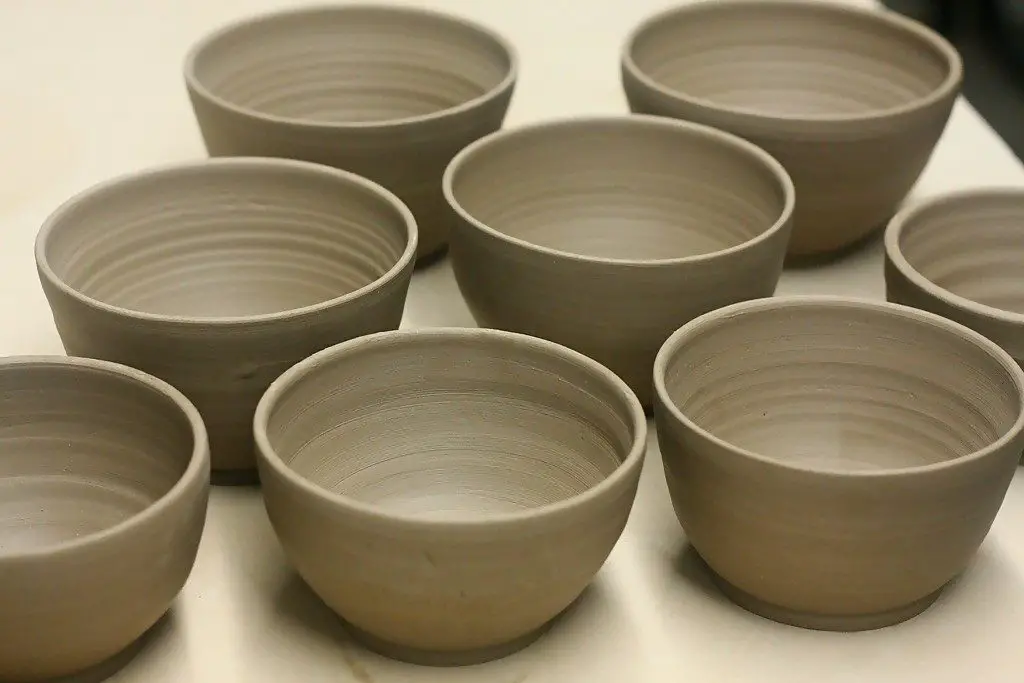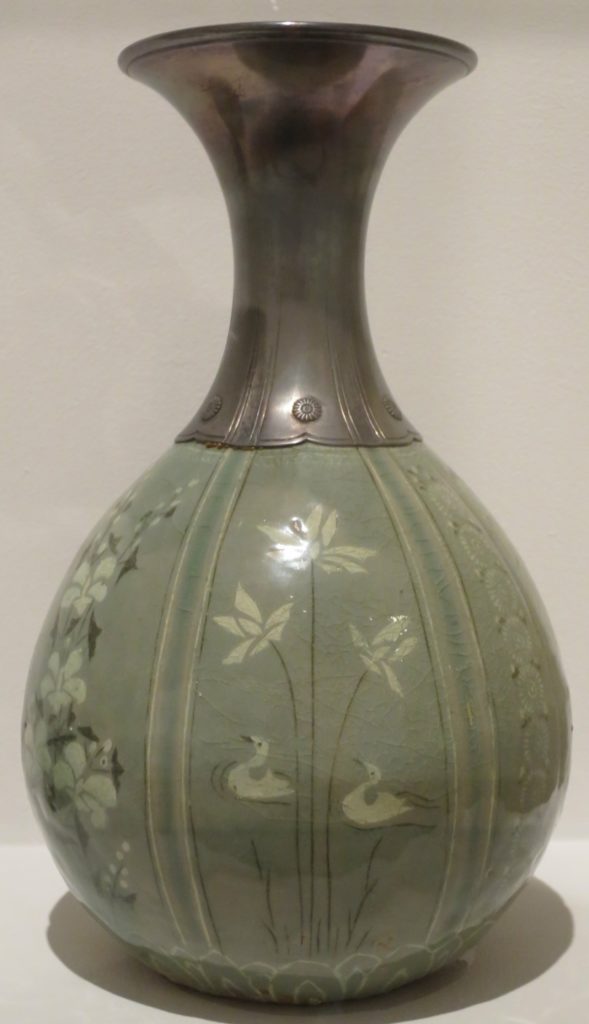When it comes to whether or not you should take pottery or ceramics, you may wonder which is better. Well, you’re about to find out.
There are differences, and the real answer to whether or not which one is better is ultimately up to your own personal decisions, but here, we’ll first and foremost discuss what each of them are, the benefits and disadvantages of each, and the final conclusion of pottery vs. ceramics, which is better for you as a person.

Is there a difference though?
Here’s the thing, pottery and ceramics are the same, but they’re also different. There is a difference between them, and we’ll go into details about what it is.
People mistake ceramics for pottery because of the following:
- Many times, the words are used interchangeably
- Typically, you do use pottery for ceramics in a sense
- Ceramics does involve clay aspects, so it’s kind of like pottery
But, here’s the thing, pottery has been around for a lot longer in a sense, and ceramics is a little different from pottery. Here, we’ll define what they are, and the pros and cons of each of them below.
What is Ceramics?
Now ceramics involves heat. You essentially need to heat these up to different levels, and the chemical composition of this does change over time.
Some examples of that include the following:
- When heated high enough, the clay won’t disintegrate again
- At a high enough level, quartz inversion happens, making it waterproof
- At even higher levels, glassier finishes can be found on the wares that you make
Have you ever thrown a piece of clay in the water, like a clay pot? Notice that, when you do so, the piece disintegrates.
Now, heat that same piece up to let’s say, about 660-1470 degrees Fahrenheit. When that happens, the clay ends up being converted, and it won’t dissolve again.
Ceramics also comes with different aspects that pottery has nothing to do with, and this has to do with the chemical composition, such as the following:
So, it works in more of a chemical composition sense, which may be good if you want to create unique wares that are virtually waterproof.
What else can you do with ceramics?
You can actually make a lot with ceramics. When you Google ceramics, you’ll get the following:
- Different artistic wares
- Crowns
- Engines
- Other items made with heat-treated materials
So ceramics is a lot broader than just heating up pots and such to a high temperature in order to make them feel smooth and almost glassy. Every time you get a crown from the dentist, or even a false tooth, they’re often made with ceramics.
So it is much broader in usage, but know that for it to occur, it must heat-treat the item in order to make it change the chemical composition to something different.
Then What is Pottery Technically?

Pottery, in contrast, involves molding the forms that you’re looking to make.
Some of the cool things you can make with pottery include the following:
- Jars
- Containers
- Plates
- Cups
- Bowls
Basically, whenever you go to a site and see those clay structures, then you’ve got pottery.
Now pottery is made on the wheel, and while you’ve probably seen a pottery wheel if you’ve seen the movie Ghost with Demi Moore and Patrick Swayze, it isn’t all that sexy. Pottery involves shaping pots on one of these, and they manipulate the form using a spinning mechanism in order to create a wonderful structure.
Pottery typically involves this process:
- Taking the clay
- Throwing it on the wheel
- Shaping it into different ways
- You can also hand-build it, using slabs, coils, or the like
Pottery has evolved over time, such as in the case of studio pottery, which involves making many wares.
Pottery has two different types at this point in time, and they usually involve the following:
- Unique shapes, ones that you can individually sell for a profit
- Mass-Production of different pottery pieces
Pottery though is the process of doing this, and you’ll realize that, as you start to learn more about it, both of these are kind of similar in a sense.
The Advantages and Drawbacks of Pottery
So what are the advantages of pottery? Well, they read as follows:
- It can be easy, to begin with, especially with hand building
- It involves fewer materials and chemicals
- It generally is a bit safer, since the chemicals aren’t as vast in pottery
- It is better for beginners to start with
- You can get a wheel, and you can create some wonderful shapes
- It’s much easier to mass-produce pottery than ceramics in a sense
- You can create many different shapes and items
- It typically doesn’t require much space
- You don’t need to spend a couple of thousand dollars on a kiln
Typically, pottery is where most people who are interested in creating this type of media begin. Pottery is still very much used today, especially in a commercialized sense, and it’s worth mentioning that this is still very popular, and useful for others to use.
There are some drawbacks with pottery, and some of those include the following:
- If you don’t glaze it or fire it, it’s incredibly limited in use
- They are often very rough to the touch, so they won’t feel as good in your hands
- The clay piece will disintegrate in water, even is bone-dry
- You’re limited technically just to pot-like shapes
- You typically need a wheel, which for the good kinds can get incredibly expensive
- This typically does require a bit of skill and learning, especially on throwing
- You need patience in order to shape it
So pottery is good, and the thing is, it’s been used for thousands of years for a good reason. There are many people that benefit from pottery as well, and lots of people love to do it.
The Benefits and Drawbacks of Ceramics

So there are similar benefits and drawbacks to ceramics as well, and they are definitely worth mentioning.
- Ceramics has a lot of technical and different uses
- Many times, the products made with ceramics are much smoother
- You can use ceramics for furniture, along with artistic pieces
- You can make different objects out of ceramics, including armors, knives, and clay, so it’s a much broader type of production
- It often allows for a bit more artistic freedom, especially with all of the different slips and stains that are out there
- It typically is a lot of fun, and both beginner and veteran artists can enjoy it
- It is pretty easy to get into, and you can build on your repertoire of different items over time
- Ceramics allows you to create functional items that can hold water and food you can use, so you’ll get more use out of these items.
Now, ceramics is good if you’re looking to create functional items. While not every ceramics piece is functional ware, there are many different glazes that you can use in order to create a piece that’s useful for you to use.
There are a few drawbacks to ceramics though, and a lot of them come in the form of chemical concerns and also cost concerns, and here, we’ll highlight a few of those different aspects, including the following:
- Kilns can be pricey, and for one that fires high, you need to get something that works well
- You need to spend extra money on slips, stains, and glazes
- It typically takes a much longer time to put together ceramics than pottery
- It can also be a little boring waiting 12 hours for a piece of fire
- For ceramics, lots of times you’ll need to do multiple firings unless you’re single-fire glazing the piece
- It can be very dangerous because you’re working with silica, which is toxic to ingest
- It does require you to have to wear protective pieces to cover your mouth, eyes, and skin if the chemicals are toxic
- Kilns get incredibly hot, and there is a risk of explosion, fires, and the like with this type of artistic medium
- It often requires more space than pottery typically does
Now, ceramics and pottery are also kind of part and parcel for each other. You can’t literally have one without the other.
So are they one and the Same?
In some ways, they are one and the same. Pottery is the oldest form of ceramics, and ceramics, for the most part, are made from pottery pieces.
You kind of need to have one in order to have the other, but there are some differences, as listed above.
But, to summarize, there are a few differences between the two, and they are as follows:
- Ceramics do include clay sure, but it also includes glazes and other minerals such as silica, cobalt, and the like, and pottery just works with only clay
- Pottery is a type of ceramics, and ceramics works with more than just artistically molding materials into something that you can use
- Ceramics tend to have a smoother surface since they have been fired, and there is still molding in it, whereas pottery is very rough around the edges due to the way that it’s created
So there are differences in a sense, yes, but it really honestly depends on what you’re going for, and what you want to use it for.
So Which is Better?
It is hard to determine which one is better when they are kind of the same thing, but, when it comes to both pottery and ceramics, they have their own pros and cons.
Pottery is better for newbies and those who want to get their hands dirty and used to molding items with clay since it involves the following:
- Fewer chemicals
- Fewer items
- Less money
- A little less time into it
When you’re making items with pottery, you’ll start to realize that it’s possible to do a lot with it, but they are limited in use. After all, they can’t really be used for much more than just forming items, and while it is great to learn a wheel, there are limits to it.
However, ceramics has the extra added benefit of the following:
- A smoother finish
- You can use these wares for a lot more than just decorative purposes
- You can add glazes and other finishes in order to enhance the look, and even the color to it
- You can heat it up, and make some wonderful, intricate pieces
- If you like to experiment with chemicals, then this may be a great one
When working with ceramics, do remember that it does involve some chemicals, and a few other concerns, including the following:
- Silica is toxic, so you shouldn’t inhale it
- A lot of glaze recipes include toxic chemicals, so watch out
- It often requires you to heat items up to extremely high temperatures, so be mindful of the kiln
With ceramics, you’re working with more dangerous conditions, but if you’re familiar with safety on all of these fronts, and all of the different aspects of it, then you’ll definitely be quite happy with the results of it.
When it comes to whether or not pottery or ceramics is better, the answer is that it really depends on the type of wares you want to create. If you feel like creating more functional, useful items, then you’ll want to consider using ceramics and getting into it, but for the greener people that want to start off slow and learn how to make items, pottery is the way to go.







